1 The International Committee for The Conservation of The Industrial Heritage
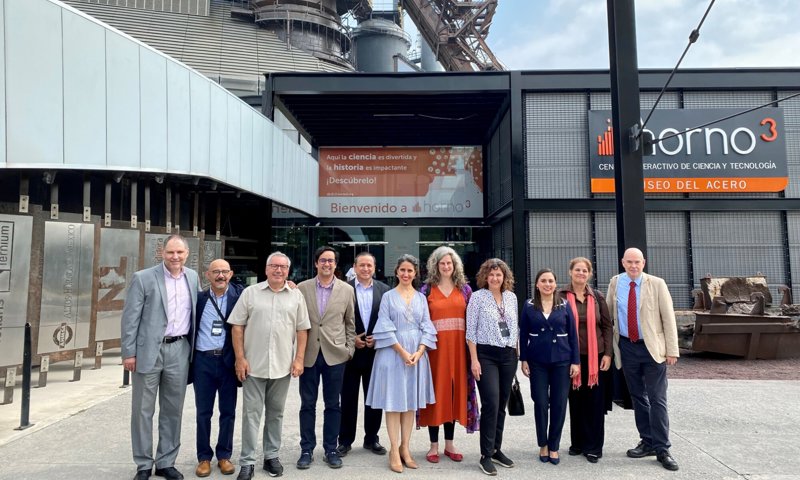
TICCIH delegation visiting Horno3, a blast furnace forming part of the Museu Acero (museum of steel) in Monterrey, Mexico, October 2023 (Photo: Miles Oglethorpe)
The International Committee for the Conservation of the Industrial Heritage (TICCIH) is the world organisation for industrial heritage.
It aims to promote international cooperation in preserving, conserving, investigating, documenting, researching and advancing education of the industrial heritage. This can include material remains of industry, as well as housing, industrial settlements, landscapes, products and processes, and associated documentation and artefacts.
TICCIH members come from all over the world, and from a wide range of disciplines including architecture, archaeology, academia and heritage.
It plays an important role in advising on historically significant industrial sites for the UNESCO World Heritage List and is recognised by the International Council on Monuments and Sites (ICOMOS) as a designated consultant in all matters related to the study and preservation of industrial heritage.
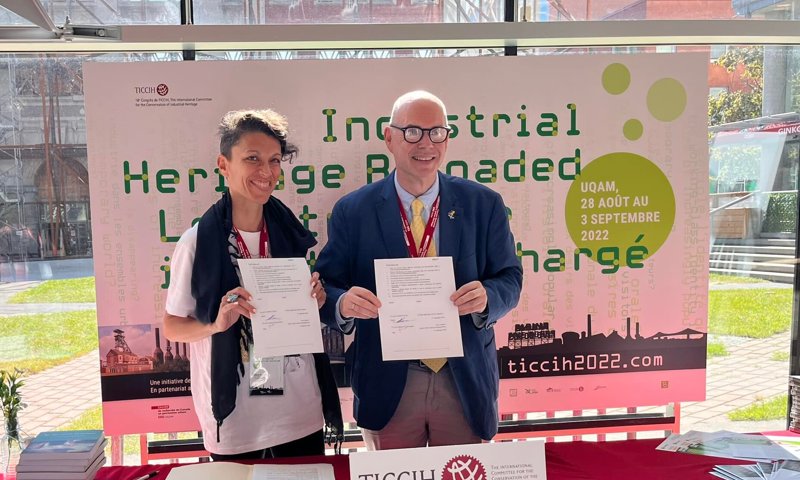
Anica Draganić, representative of Serbia, and TICCIH president Miles Oglethorpe announce the official signing of the National Agreement to launch TICCIH Serbia at the 2022 TICCIH Congress, Montreal Canada, 5 September 2022 (photo courtesy of TICCIH)
The current President of TICCIH is Dr. Miles Oglethorpe, Head of Industrial Heritage at Historic Environment Scotland. His deputy, Mark Watson, is the current UK National Representative.
Through these two roles, we help to facilitate research on priority themes, for example pioneering research into the history of the petroleum and textile industries — aspects of industrial heritage which have played a key role in Scotland’s history.
Working with organisations such as TICCIH is a great way for our staff to promote the work we do internationally, while helping to support conservation efforts across the world.
2 Wind-driven rain on traditional buildings
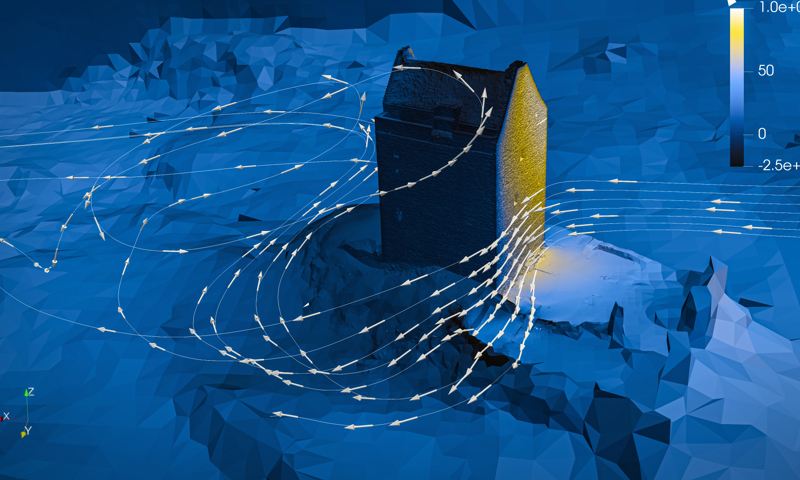
3D RANS steady-state wind simulation for Smailholm Tower, showing wind steamlines and pressure field for a south-westerly wind.
We support PhD research into a number of important areas, including the impact of climate change on our historic built environment. One of these projects looks at how extreme weather impacts our heritage buildings.
Wind-driven rain is a key source of moisture in the built environment; projections show that the climate emergency will cause extreme precipitation events to become more intense over the next 20 years.
The facades of traditional buildings can often be damaged by rainfall moving horizontally due to the wind, and this research project will use Computational Fluid Dynamics to study its effect, and the relationship between wind-driven rain, water runoff from building surfaces and processes linked to moisture causing decay to porous building materials.
The expected outcomes will improve forecast scenarios for traditional buildings, enabling more detailed simulation to inform adaptation strategies for a 21st century climate.
Find out more about our national strategy for the historic environment:
3 Conserving the Honours of Scotland
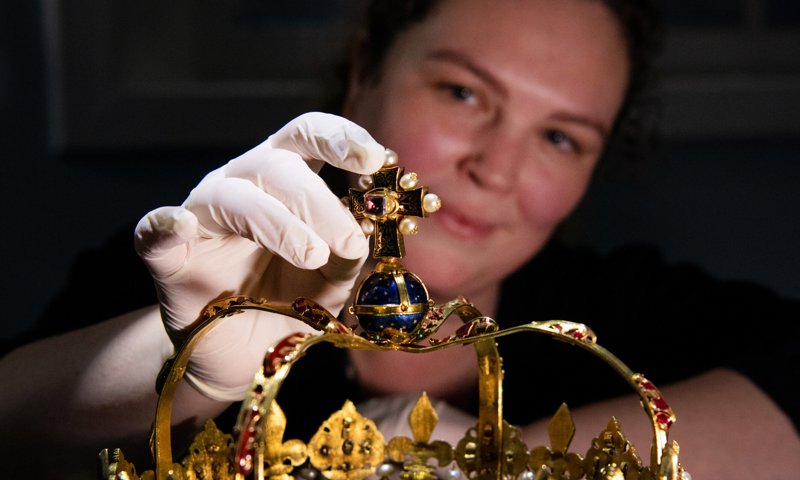
Historic Environment Scotland Senior Metals Conservator, Reed Hudson, pictured in November 2023 with the Crown of Scotland.
In 2023, we embarked on a high-profile project to conserve the Honours of Scotland, and analyse and document Britain’s oldest crown jewels to a level of detail never attempted previously.
The priceless Crown of Scotland, Sceptre, and Sword of State are made of gold, silver, and precious gems, and are objects of immense significance that still play an active and important role in Scottish public life.
Before any remedial conservation treatment could begin, Senior Metals Conservator Reed Hudson carried out detailed research exploring the creation of the Honours and how they had been cared for in the past.
Following this, each item was examined using a microscope to inspect even the smallest of details. This gave a clear picture of their pre-treatment condition and revealed several traces of their tumultuous history.
Though made of enduring materials, their age and historic use has made them very fragile. Tarnish, dust, and areas of wear had built up naturally over time. Once assessed, individual treatment plans were created that considered the unique characteristics of each piece.
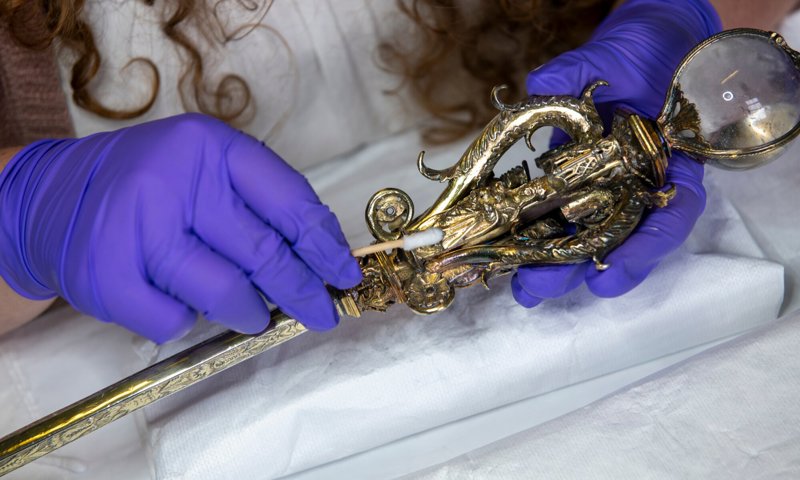
Conservation work being carried out on the Sceptre of Scotland, using a cotton swab to remove tarnish from its upper portion.
The Sceptre is believed to have been a Papal gift to James IV in 1494. Conserving the Sceptre was the most straightforward treatment as it mainly involved reducing the dark tarnish that was obscuring the gilded surface.
Much of this was done under magnification using sable-hair brushes and soft cotton swabs, rolled individually to accommodate the size of the area being cleaned. The beautiful decorations on the Sceptre were clearly revealed as the tarnish was removed.
The Sword of State is also believed to have been a Papal gift to James IV, in 1507. Crafted of gilt silver, iron, and steel, it is the most fragile of all the Honours. The silver around some areas of the hilt is very thin, and the blade was broken during the 1650s.
Evidence of the historic repair made to the blade is still visible. Much like the Sceptre, conservation of the Sword mainly entailed clearing away areas of tarnish which had built up over the years. Given the fragility and complexity of the Sword this was a much trickier process, however, which required a combination of several techniques.
Along with the traditional cleaning methods, a method called localised electrolytic reduction was also used. This involves liquid electrolytes and a small electric current to change the tarnish, which is usually silver sulphide or silver chloride, back into the original silver.
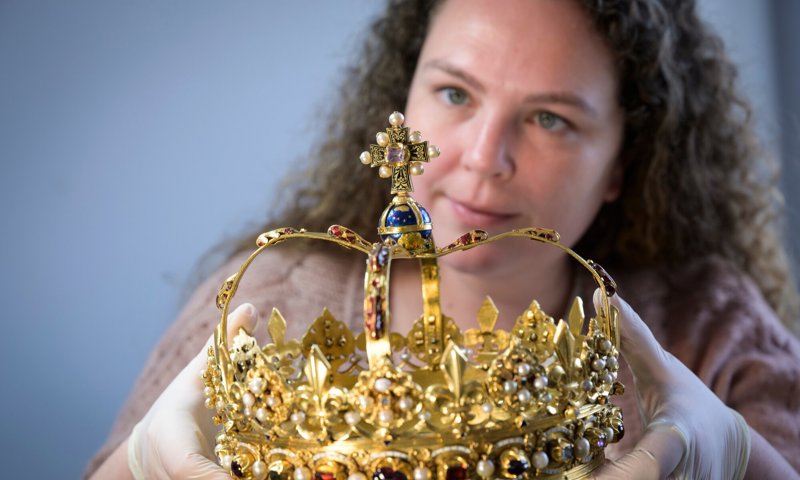
Historic Environment Scotland Senior Metals Conservator, Reed Hudson, inspecting the Crown of Scotland at Edinburgh Castle.
The Crown of Scotland was made for James V in 1540, incorporating parts of an earlier Scottish Crown. As the only one of the Honours made of solid gold rather than gilt silver, tarnish was not a concern.
Except for general cleaning to remove any dust or grease that might have built up over the years, the focus of this treatment was to stabilise some of the decorative features.
This was needed due to the Crown’s construction, whereby the different components had been joined together using a variety of techniques. Great care was taken to examine every fitting to make sure it was still stable, and adjust them as needed.
Further research and analysis of the Honours is currently ongoing. You can learn more about their history by visiting our Archives and Collections page.
Conservation Glossary
Remedial Conservation
Any process of conservation which involves physically interacting with the object. For example, cleaning an object, repairing broken or damaged parts, strengthening fragile components.
Preventative Conservation
Manipulating the environment surrounding an object (e.g. light, temperature and humidity exposure) in order to slow down deterioration, without actually touching the object itself.
